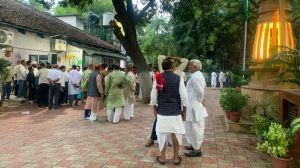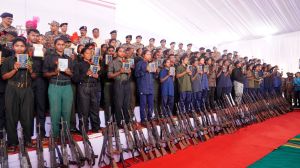51 textile mills down shutters in 1997-98
MUMBAI, SEPT 22: As many as 51 textile mills have downed shutters during the year ended July 1998 following protracted recessionary condi...

MUMBAI, SEPT 22: As many as 51 textile mills have downed shutters during the year ended July 1998 following protracted recessionary conditions in the domestic and export markets. With this the number of mills which downed shutters has risen from 206 in July 1997 to 257 by July 1998 "which is the highest closure figure", said Deepak Parikh, the outgoing chairman of the Indian Cotton Mills’ Federation (ICMF).
“Simultaneously, the currency turmoil in South-east Asian countries also led to closure of mills in 1997-98,” he said while addressing the annual general meeting of ICMF.
Even as textile units experienced acute financial stringency, bank personnel continued to perceive textiles as a high-risk industry and not a lending area. He urged commercial banks and financial institutions to take a sympathetic view of the financial needs of textile units passing through crisis, he said.
Highlighting the deepening financial crisis in the textile industry, Parikh noted that syndrome of high cost, depressedmarket conditions and pressure on profits had been plaguing the textile sector for the last two years. “The situation got aggravated from January 1998 largely due to reduced off-take of yarn and fabrics by South-east Asian countries which are reeling under the currency turmoil,” he said.
Reviewing the phenomenon of over-supply resulting from strident increase in capacity of spun and filament yarns and fabrics in recent years, Parikh said domestic market was not able to absorb the additional production. He advocated scrapping of the non-viable and obsolete capacity with the active financial support of the government as done in the UK, Japan, Italy, West Germany, Spain and China.
ICMF chairman deplored that the 1998-99 union budget had provided no relief whatsoever to the ailing textile industry and stiff consumer resistance encountered by textile units necessitated reduction in duty burden. The duty rate on textiles, the mass consumption item, should be the lowest in the three-tier excise structure ofeight, 13 and 18 per cent. “In practice, duty rates were higher than the highest slab of 18 per cent,” he said.
He suggested that ICMF, as the representative body of the user industry, should be closely associated with the Technology Mission on cotton launched with an initial allocation of Rs 60 crore in the current year’s budget.
The government should initiate early action for boosting textile exports, particularly cotton yarn which had slowed down, he said while cautioning against the rising imports of textile products especially from China, Nepal, Hong Kong, South Korea and Bangladesh. In order to stem the onslaught of cheaper imports, he reiterated ICMF’s suggestion for collection of import duty on the basis of ad-valorem or specific rates, whichever is higher.






- 01
- 02
- 03
- 04
- 05

























